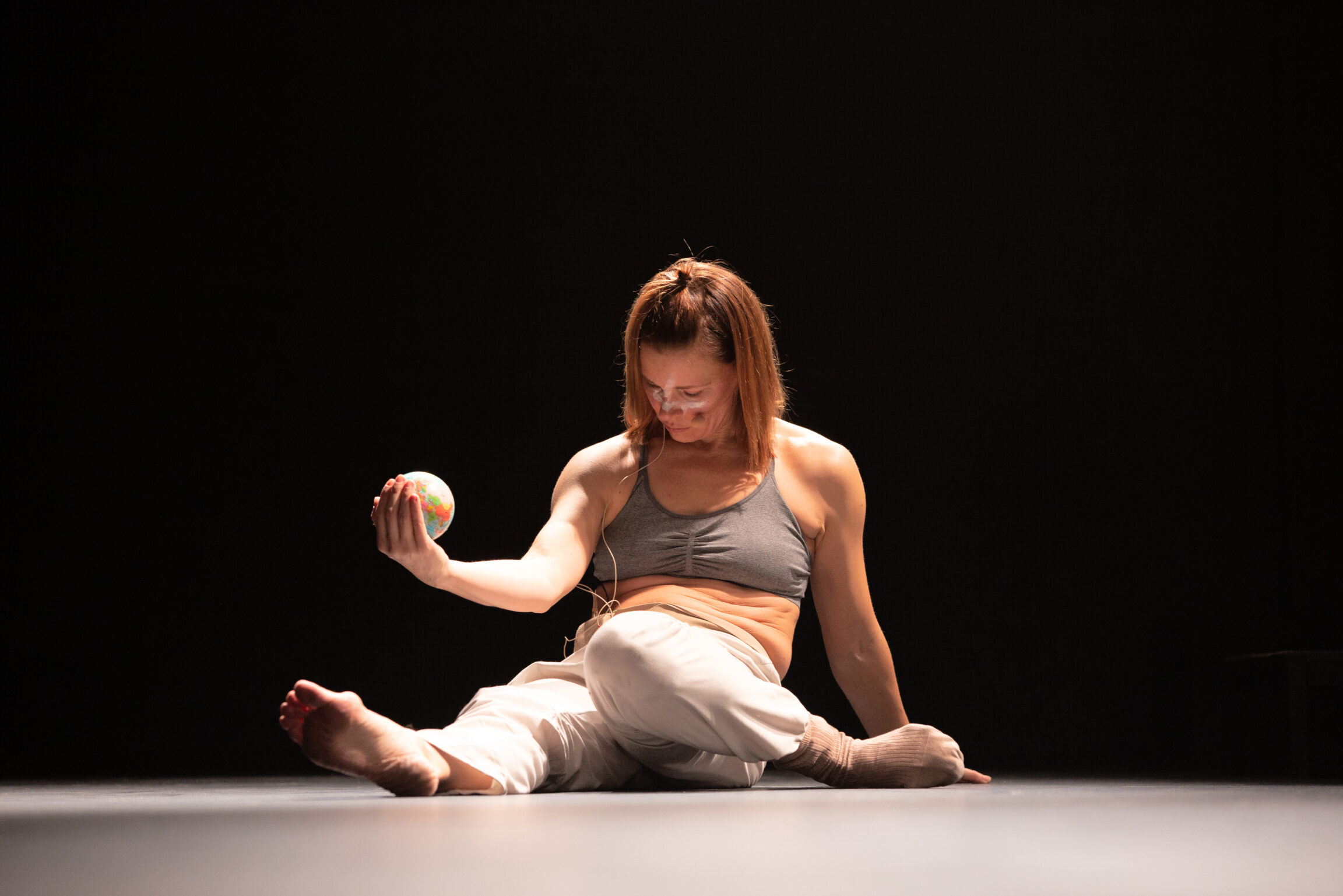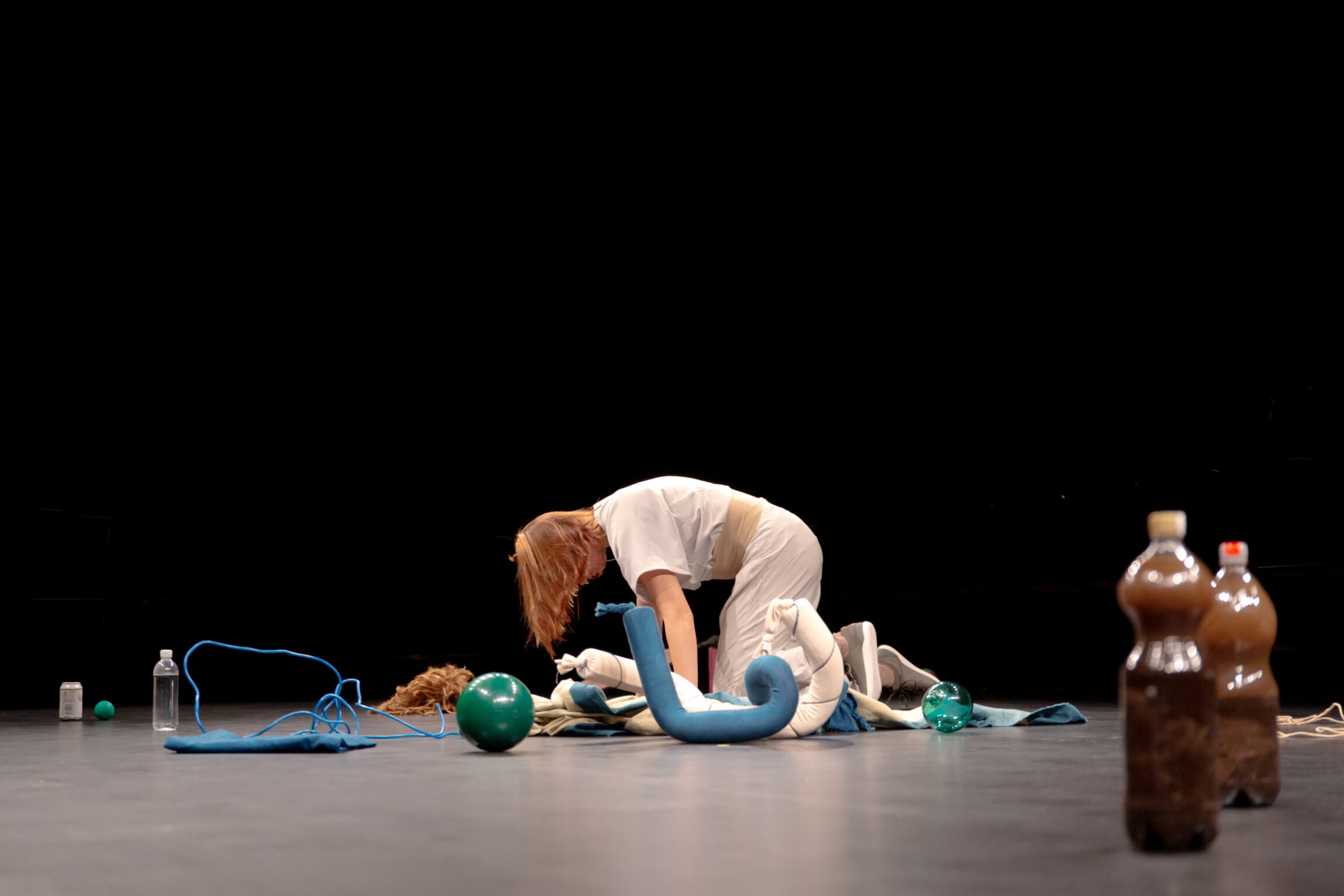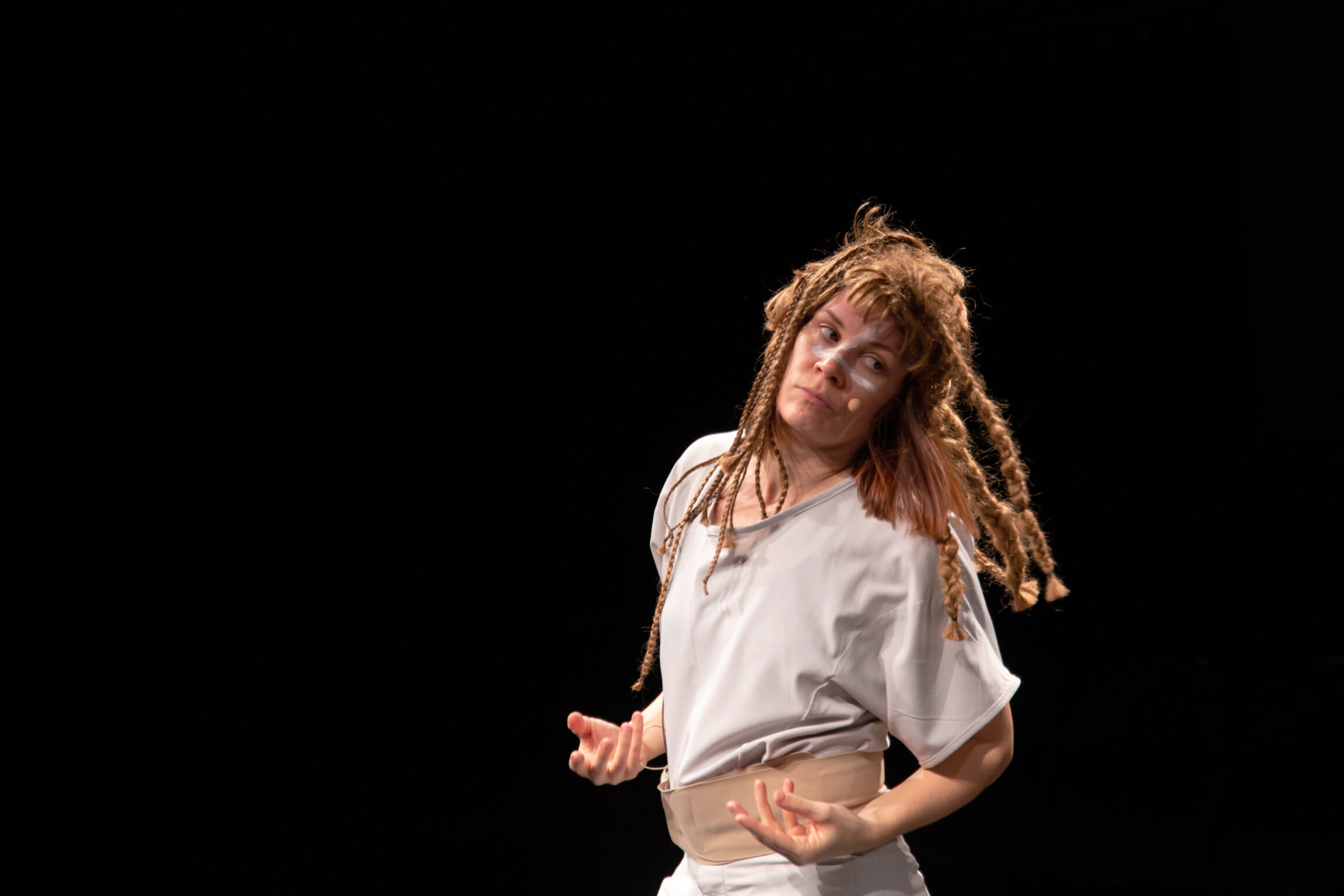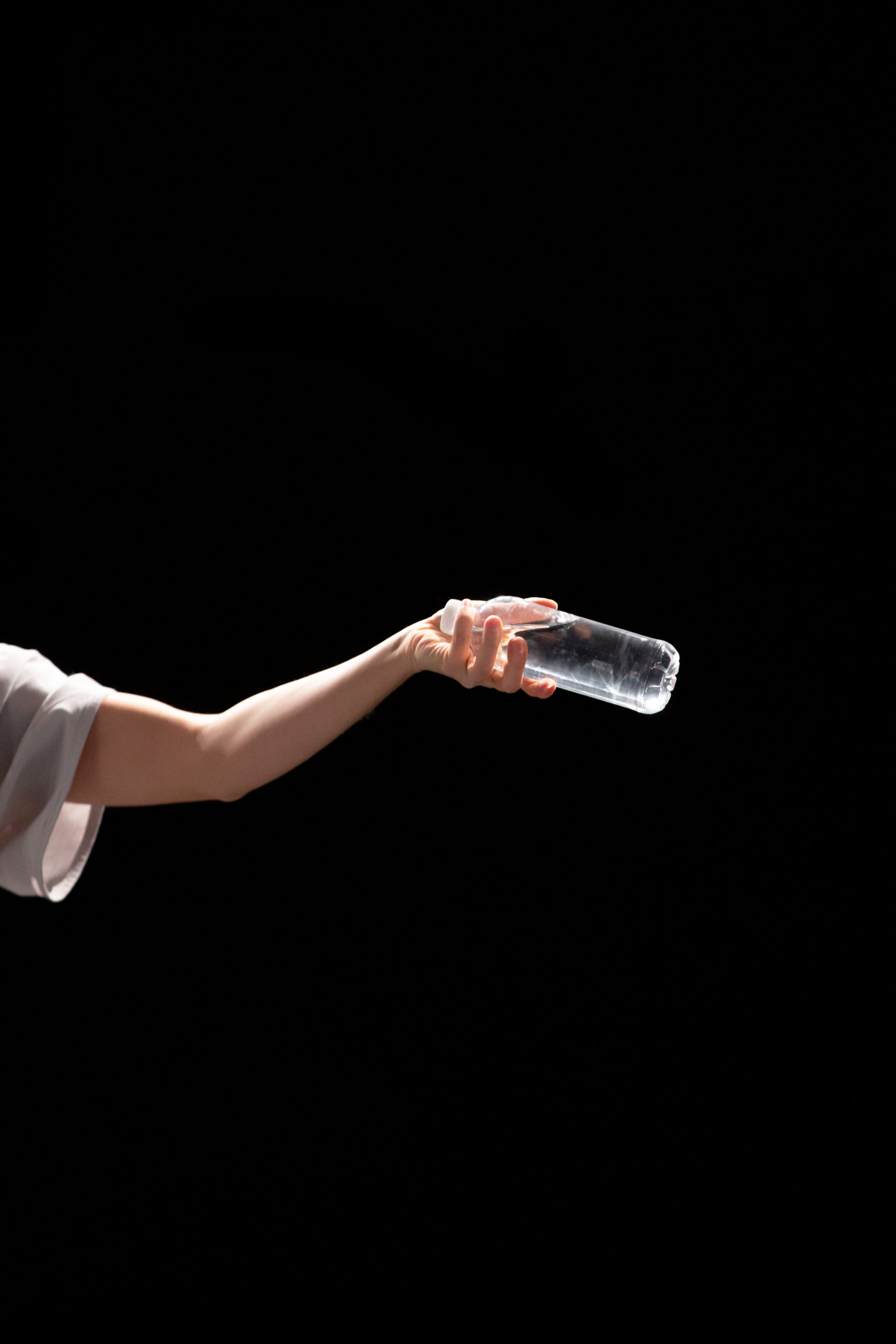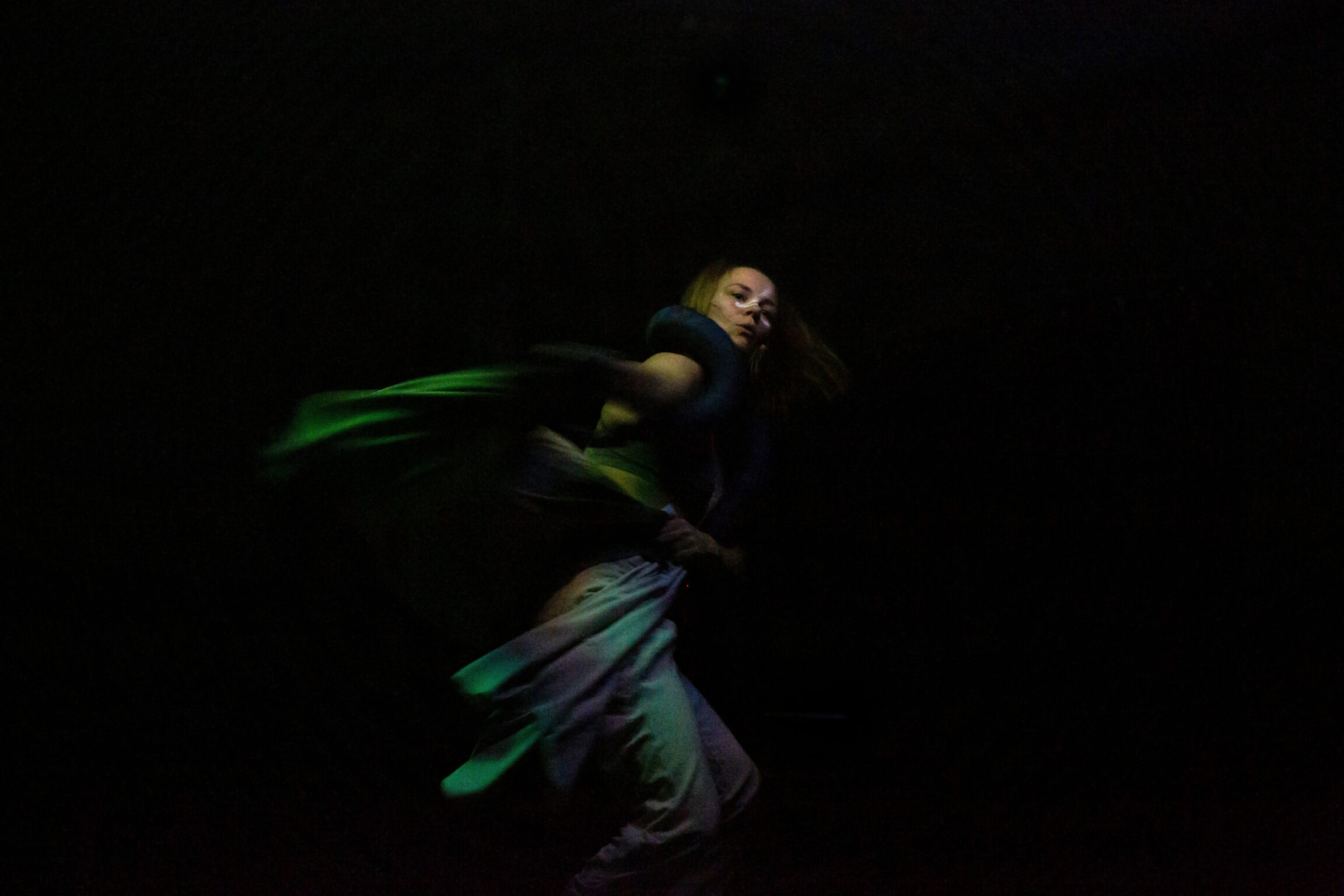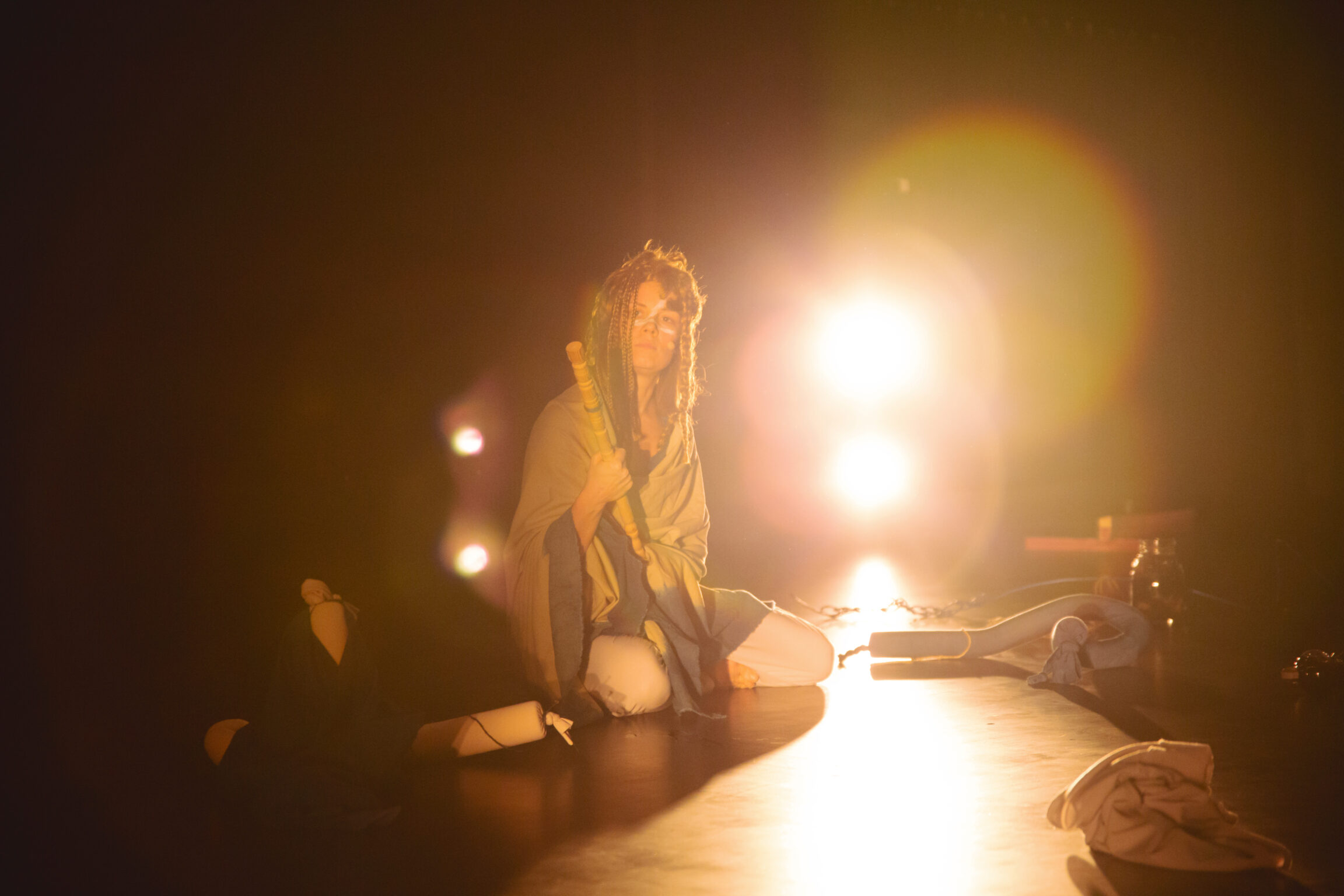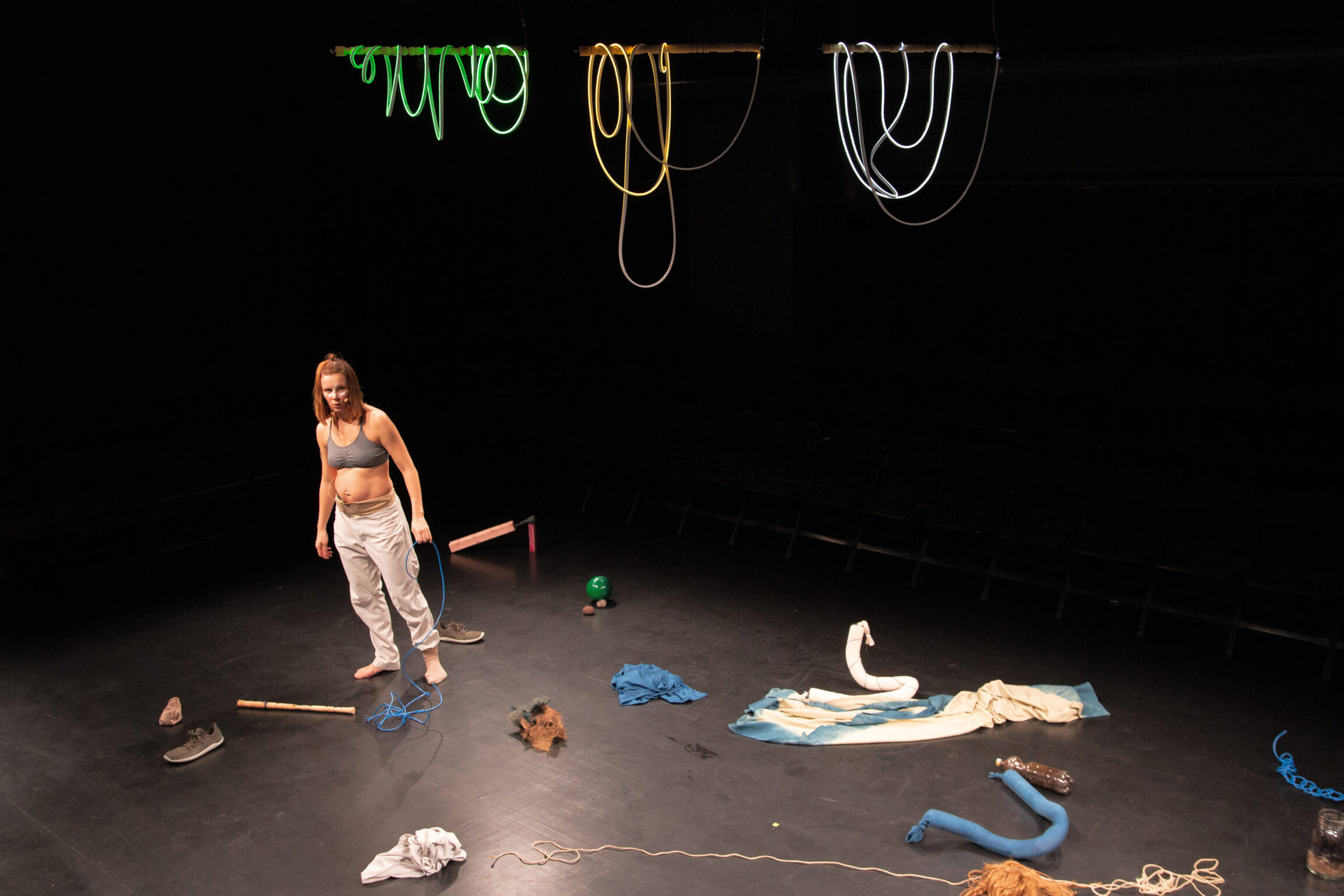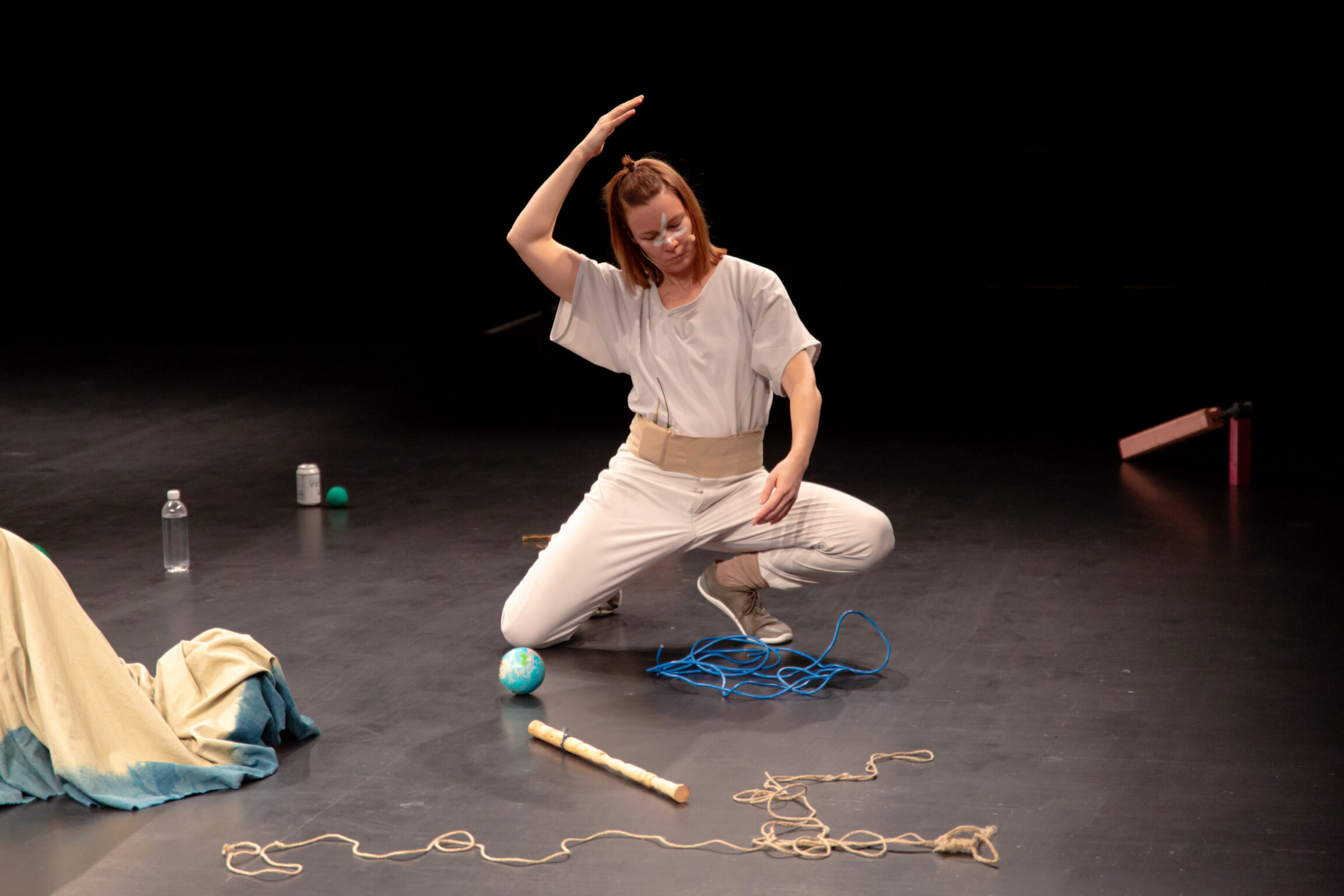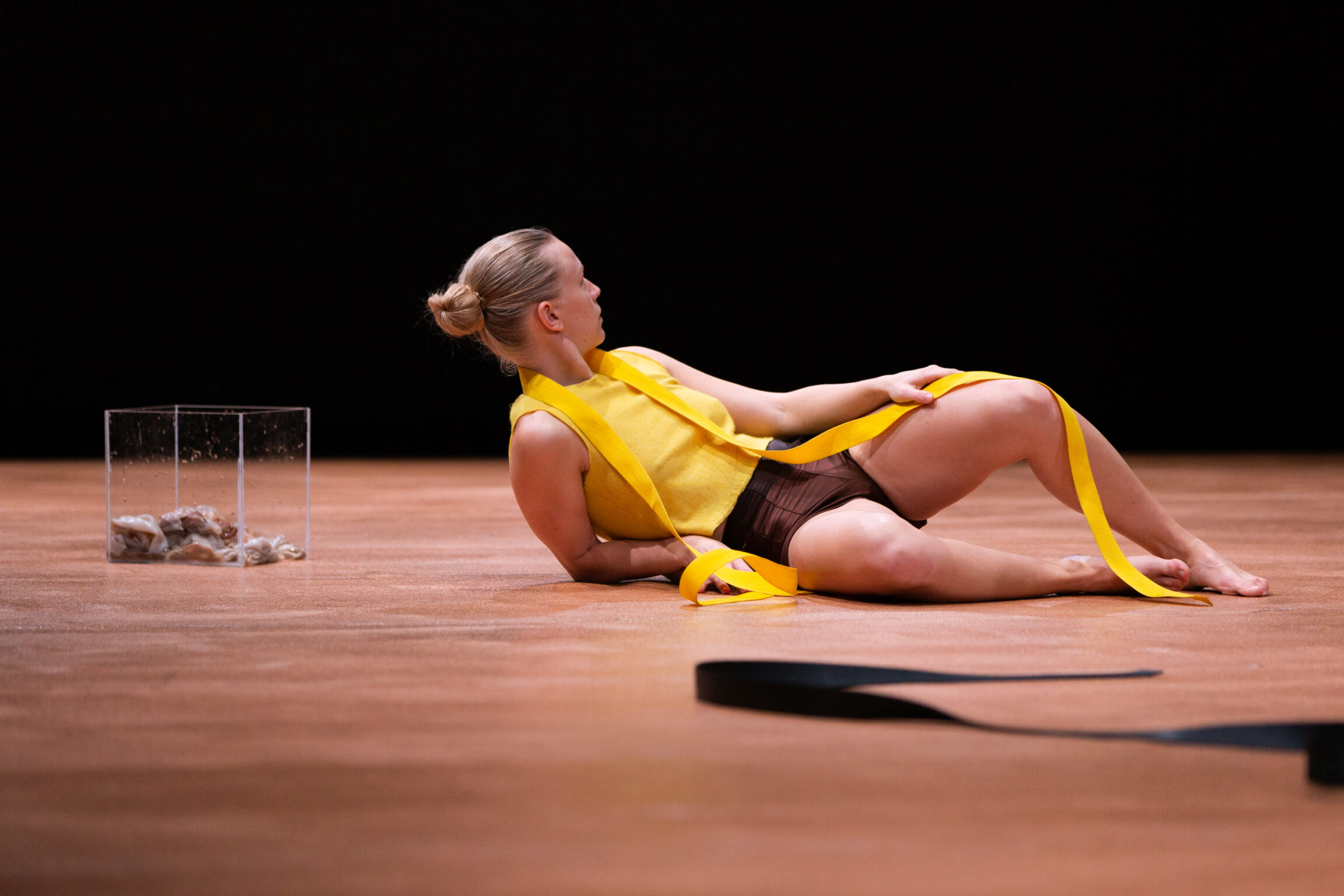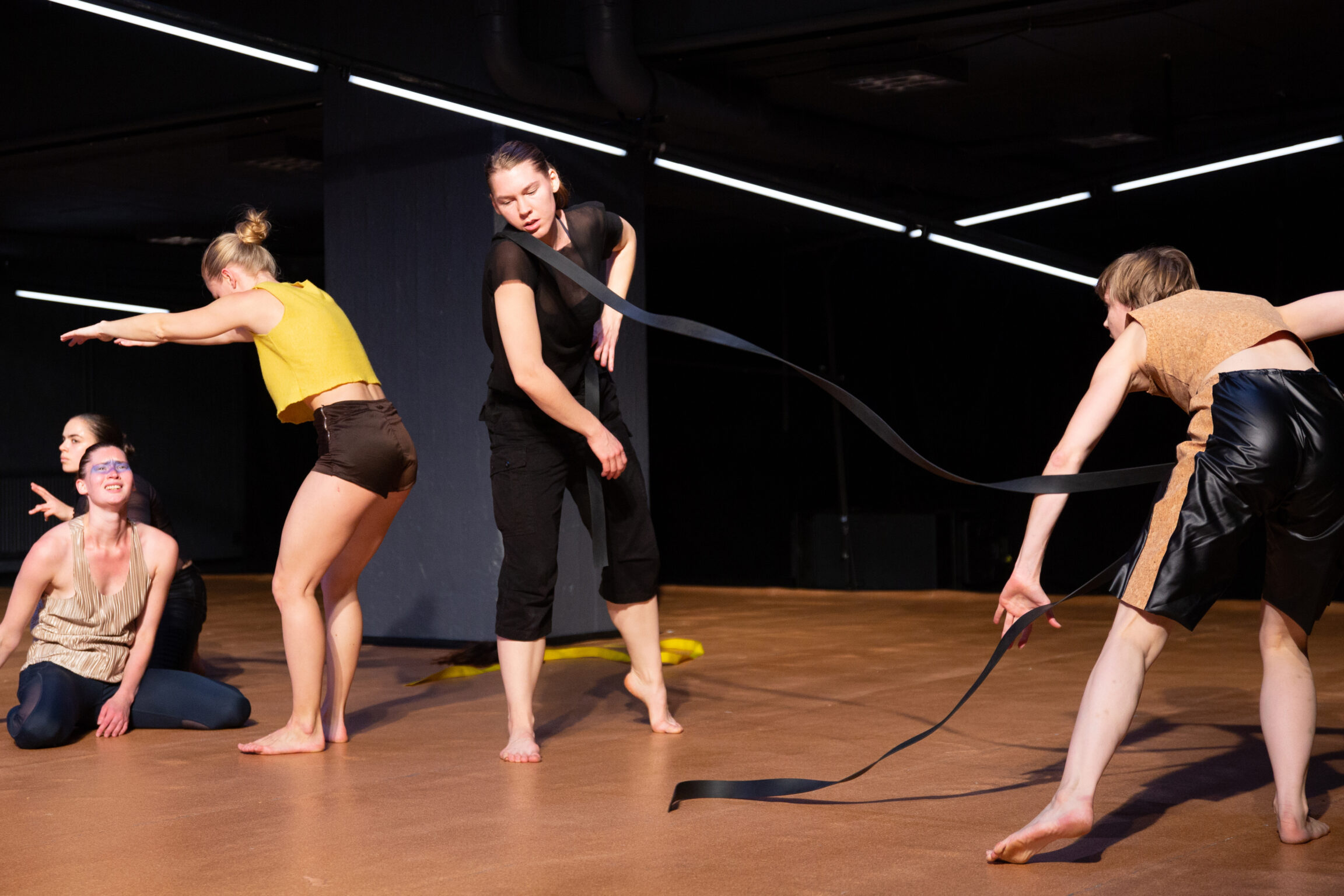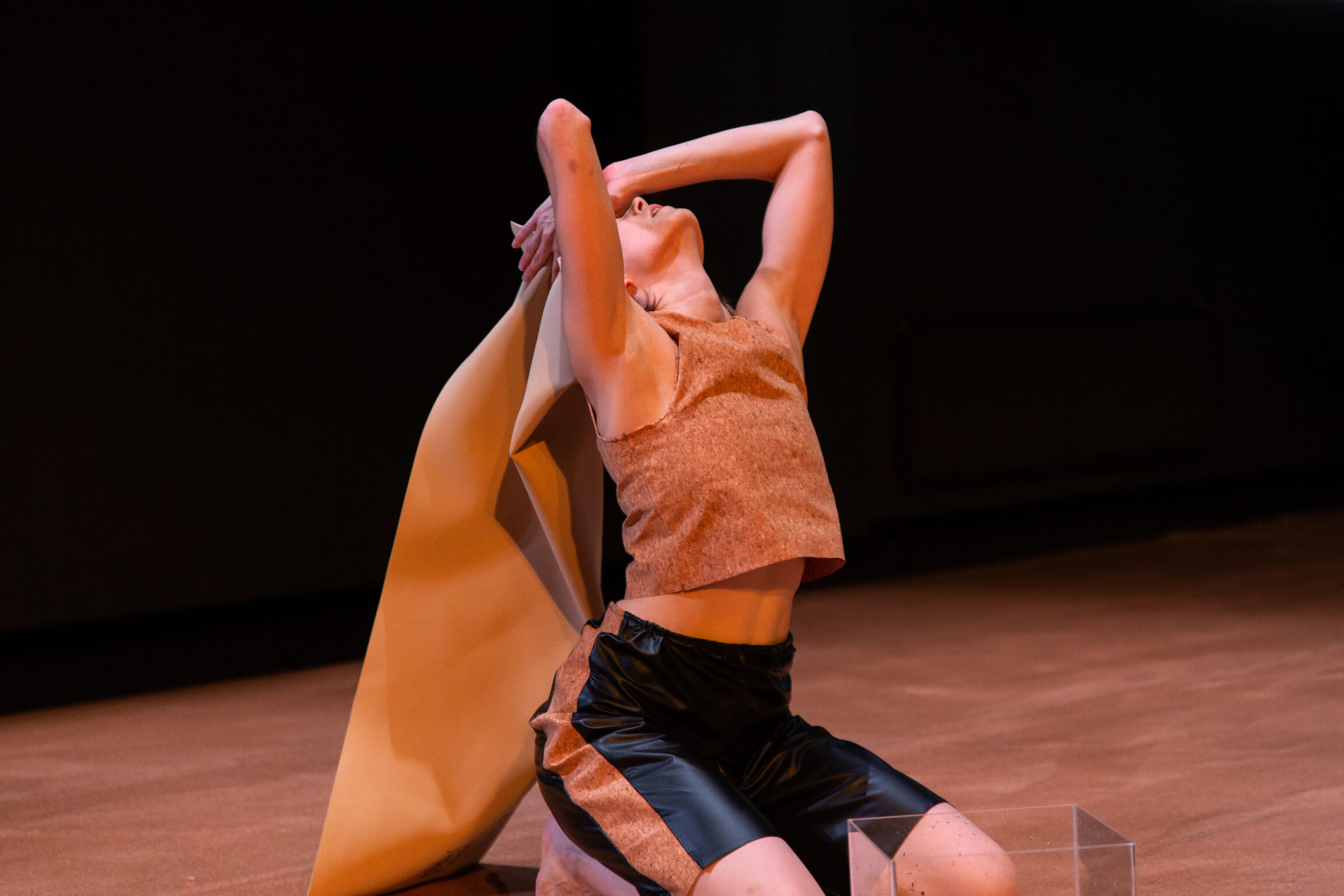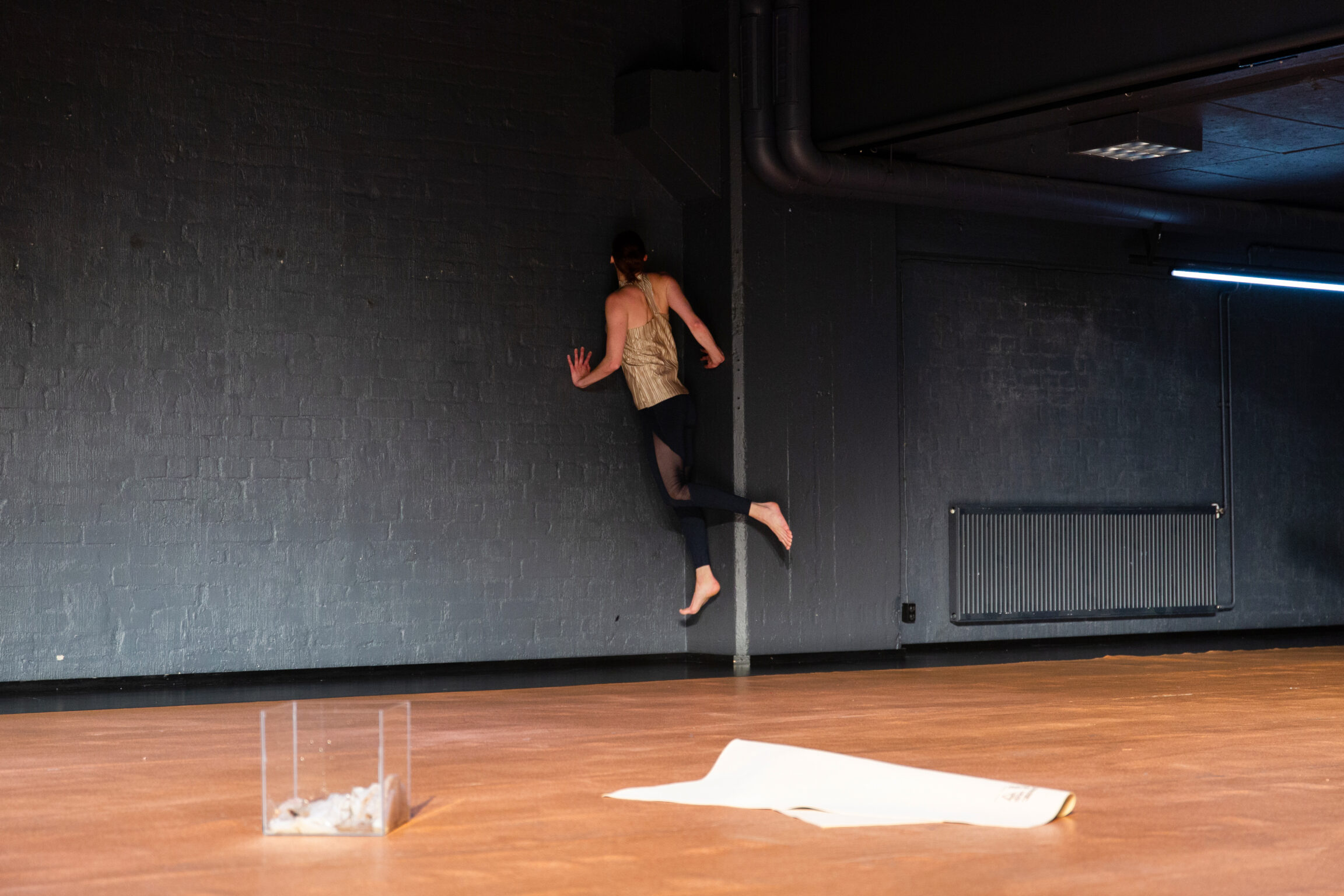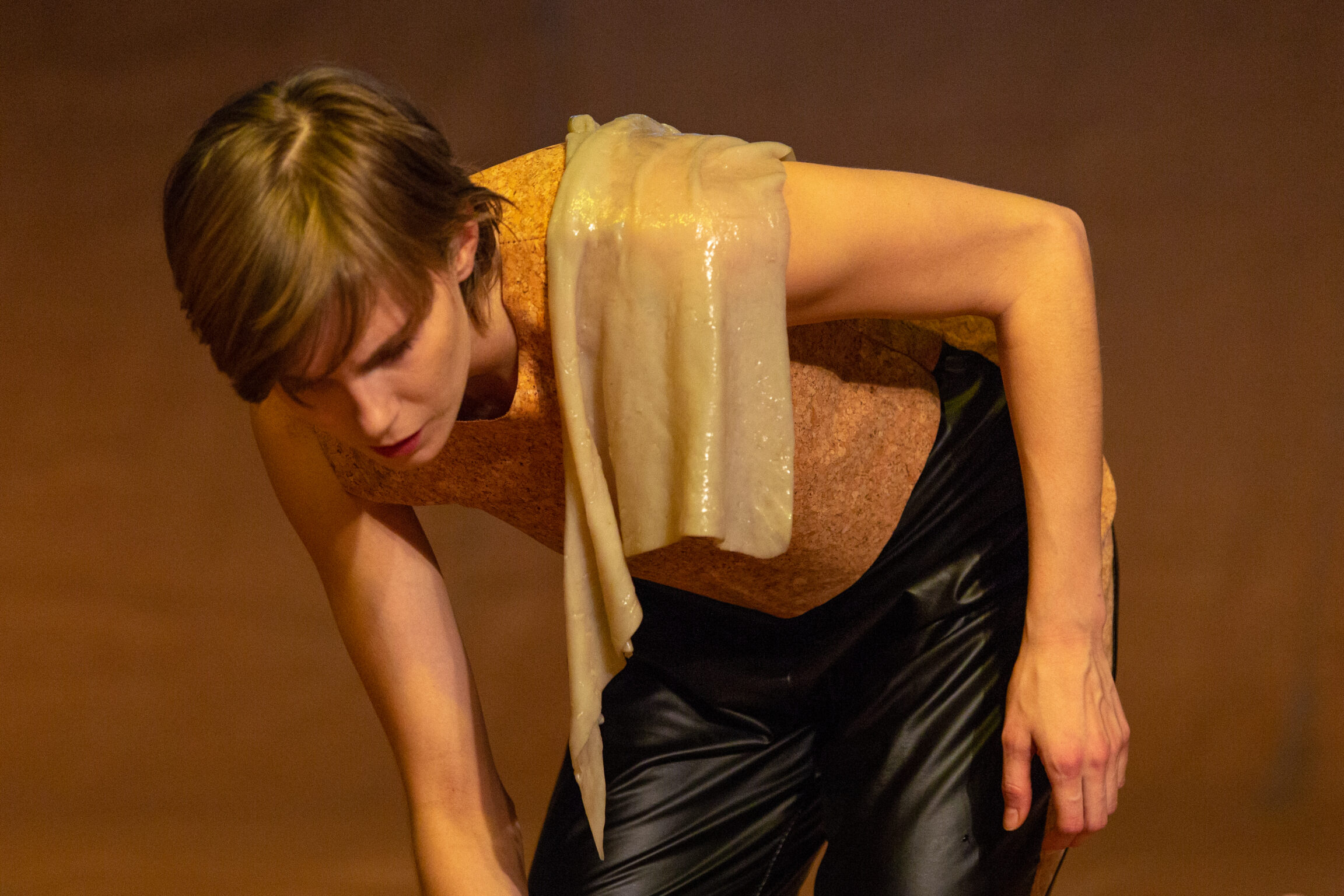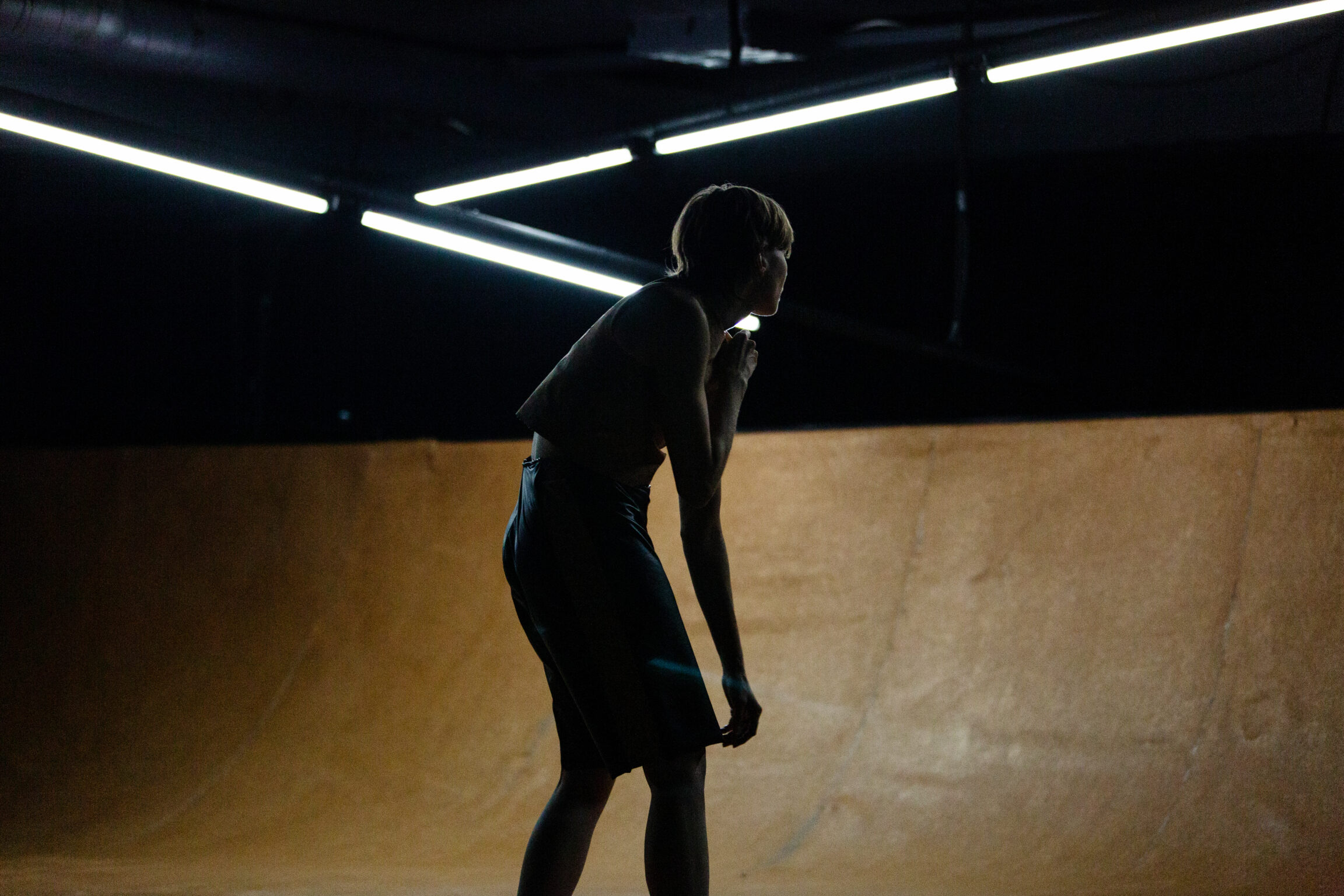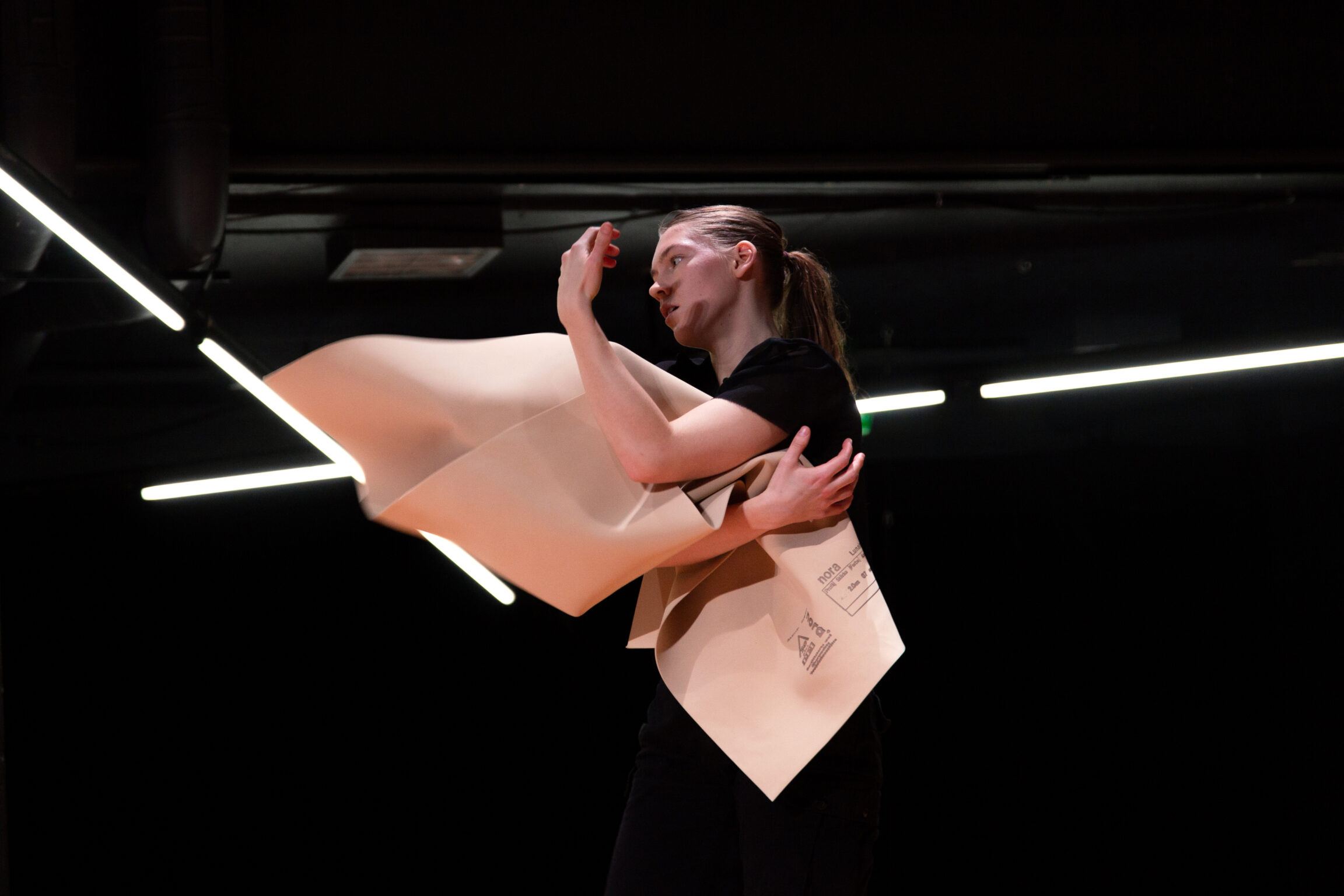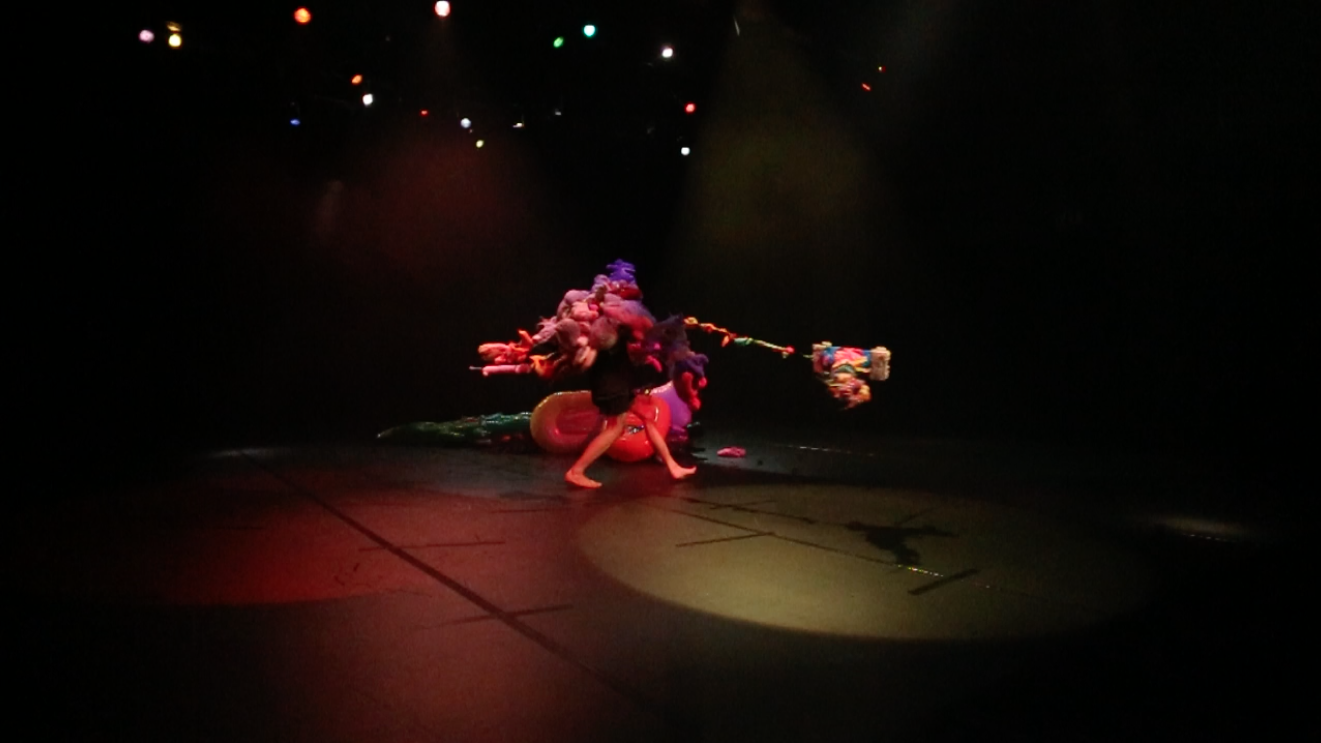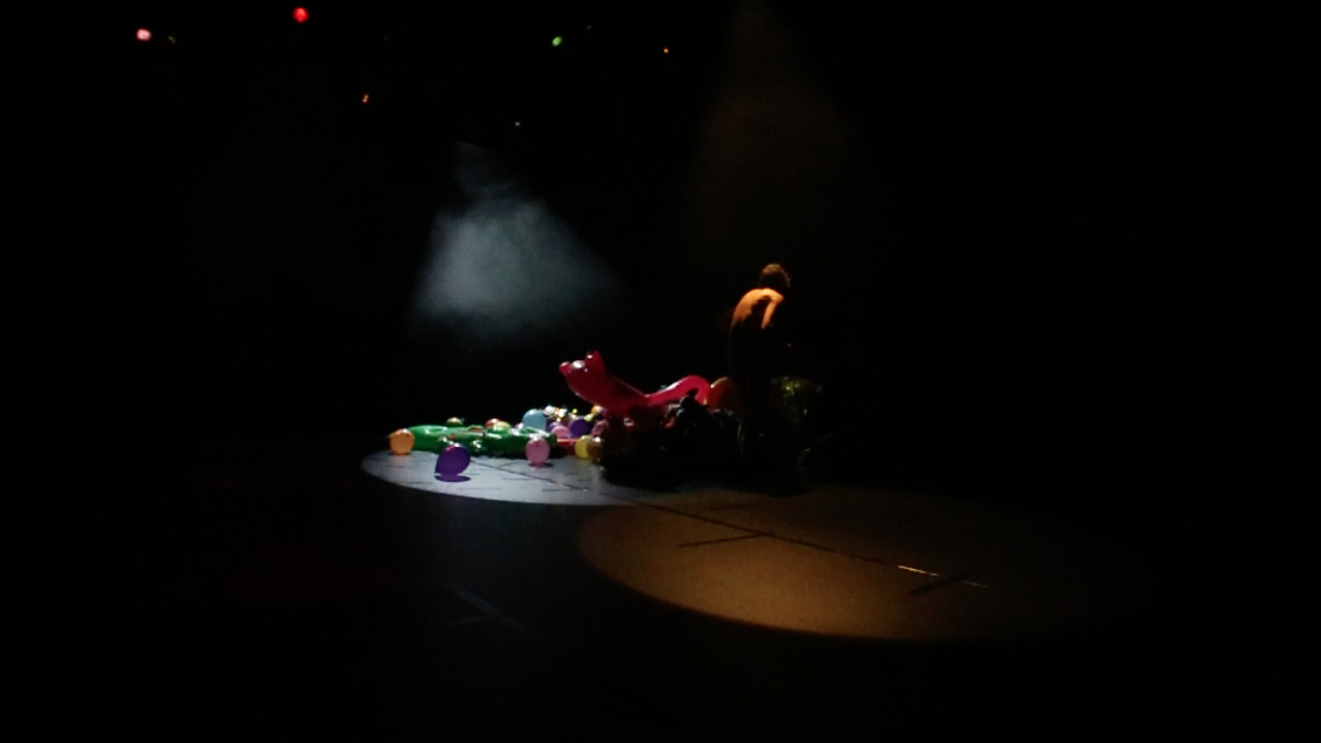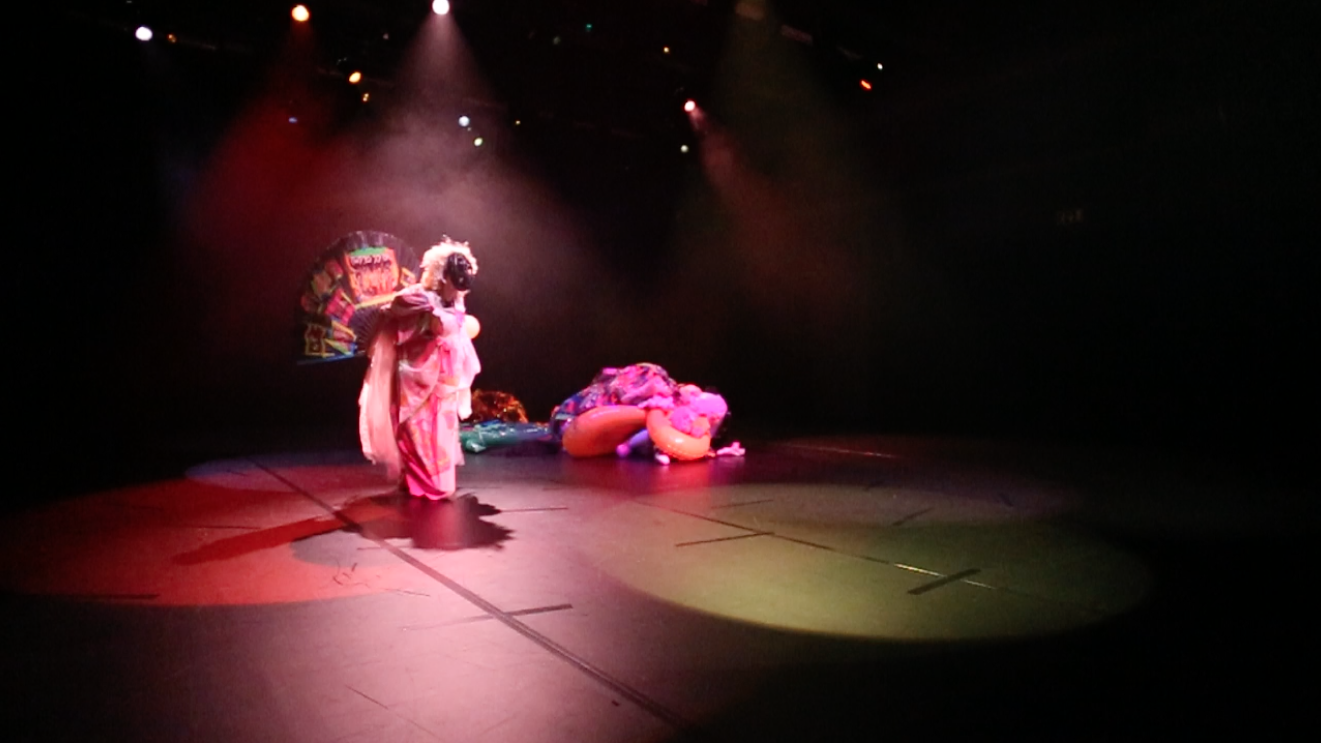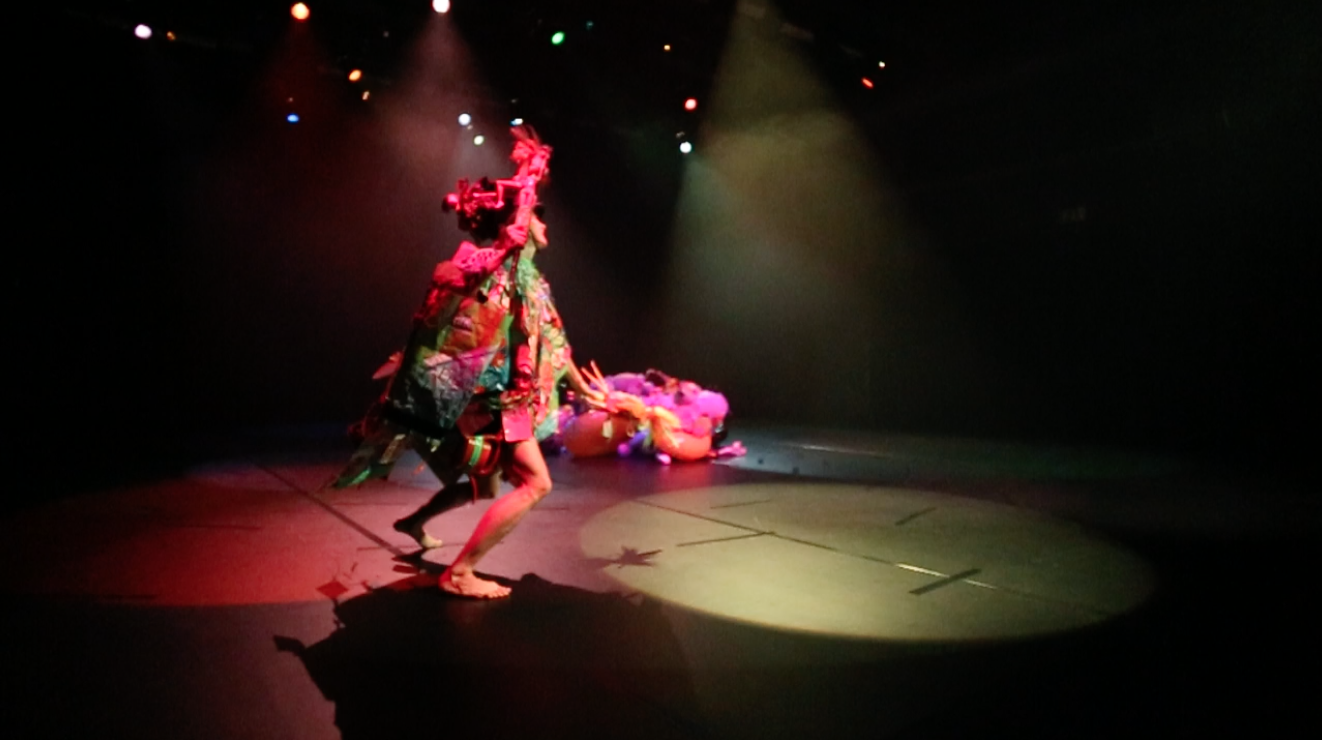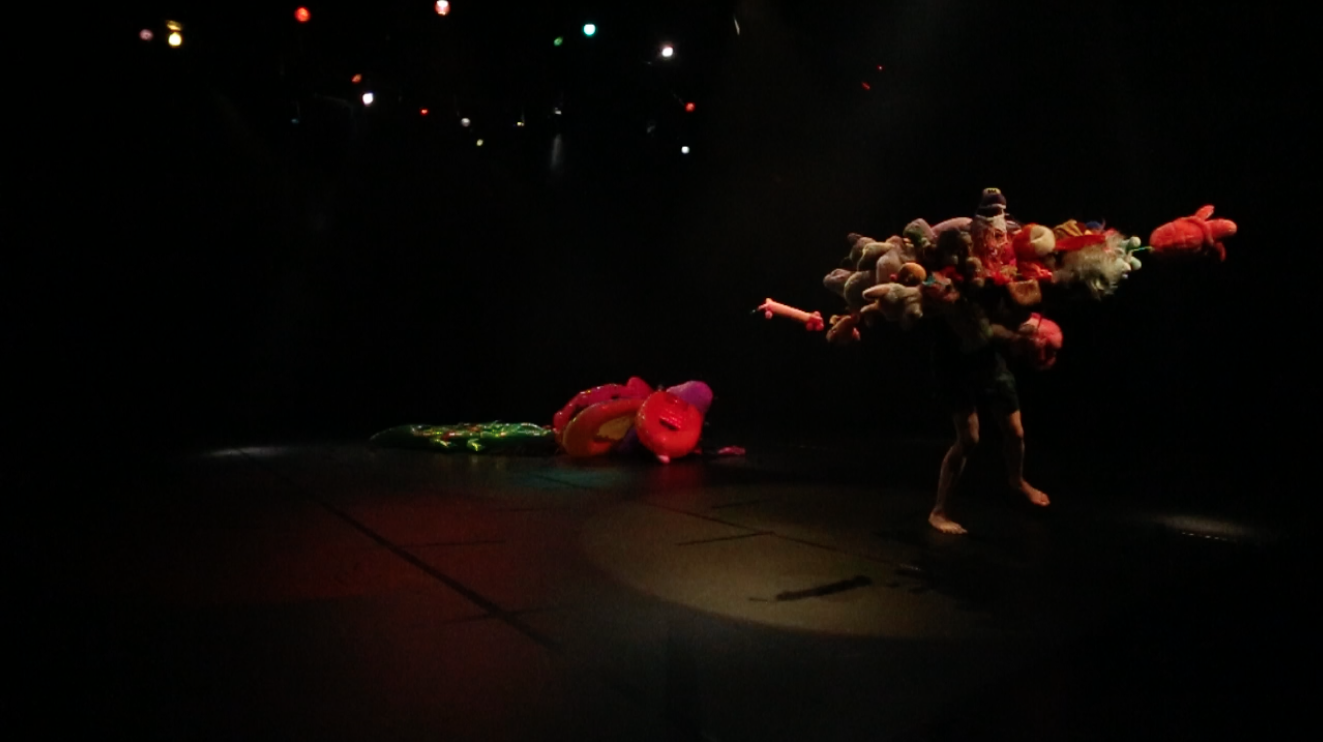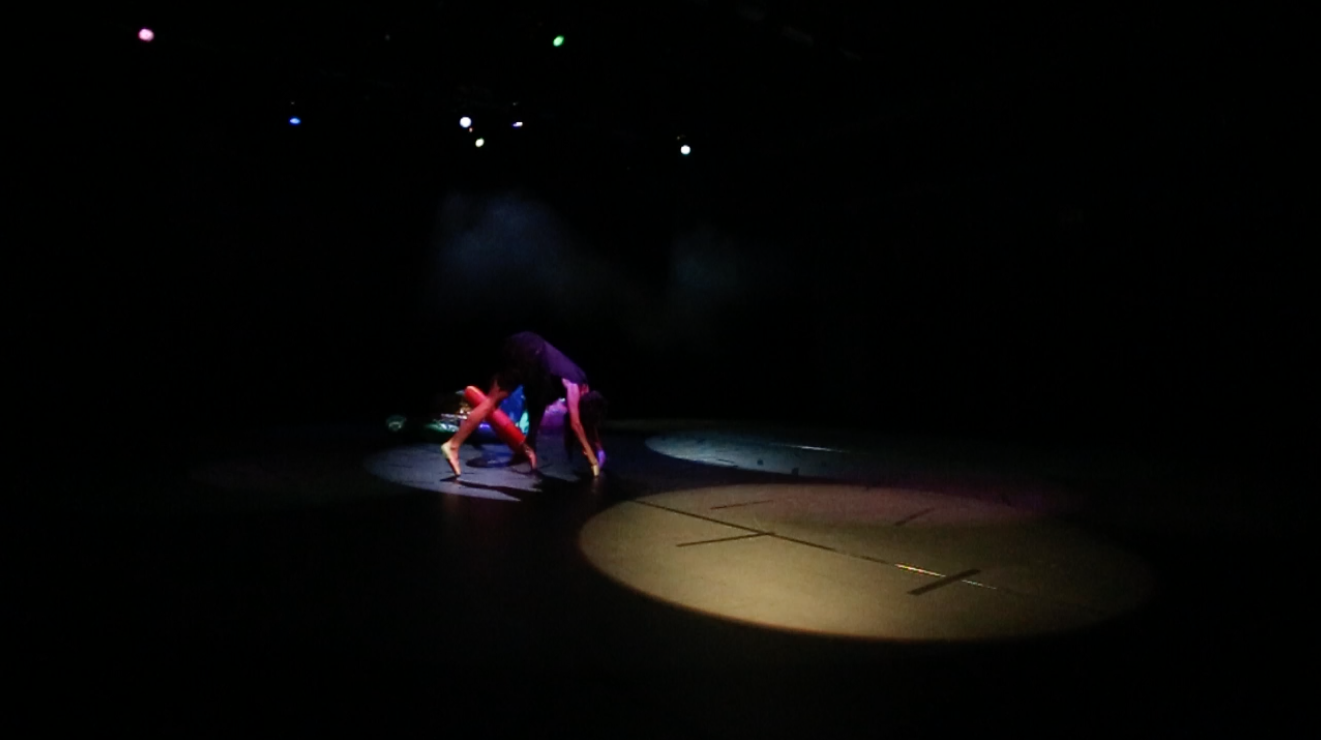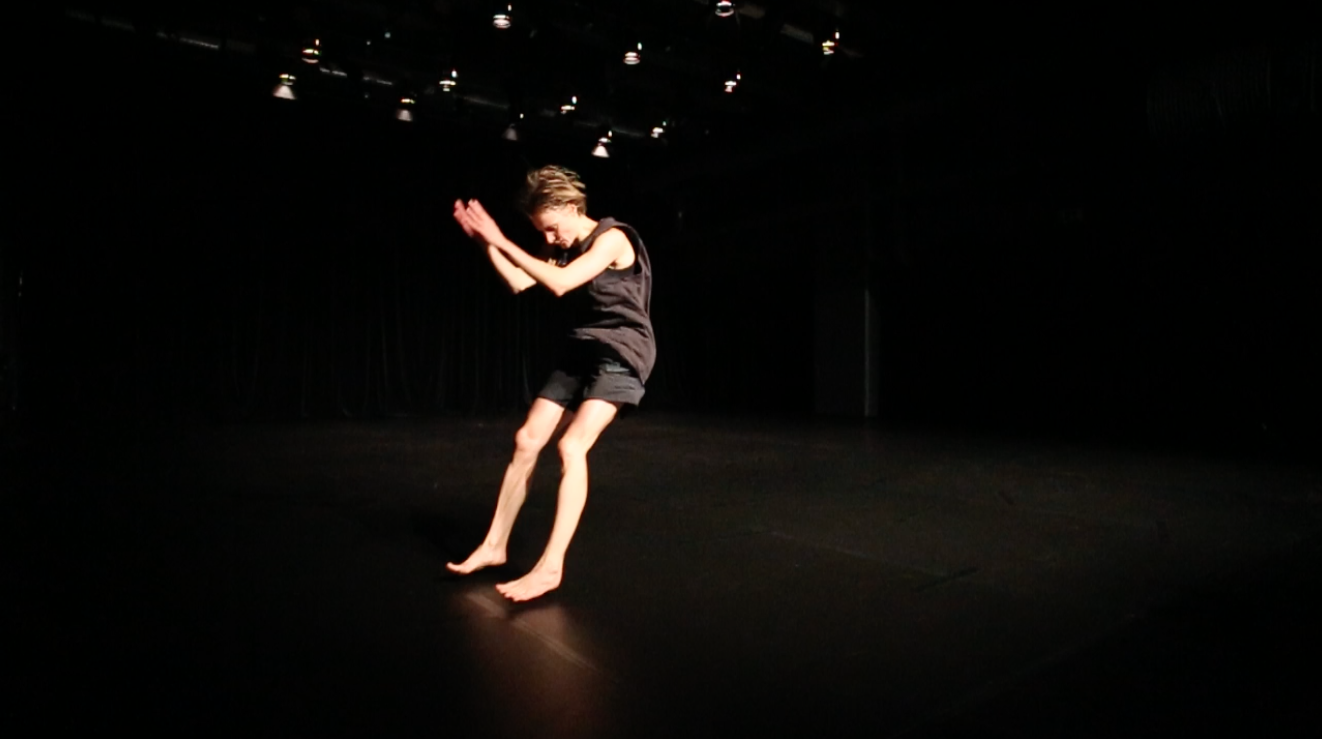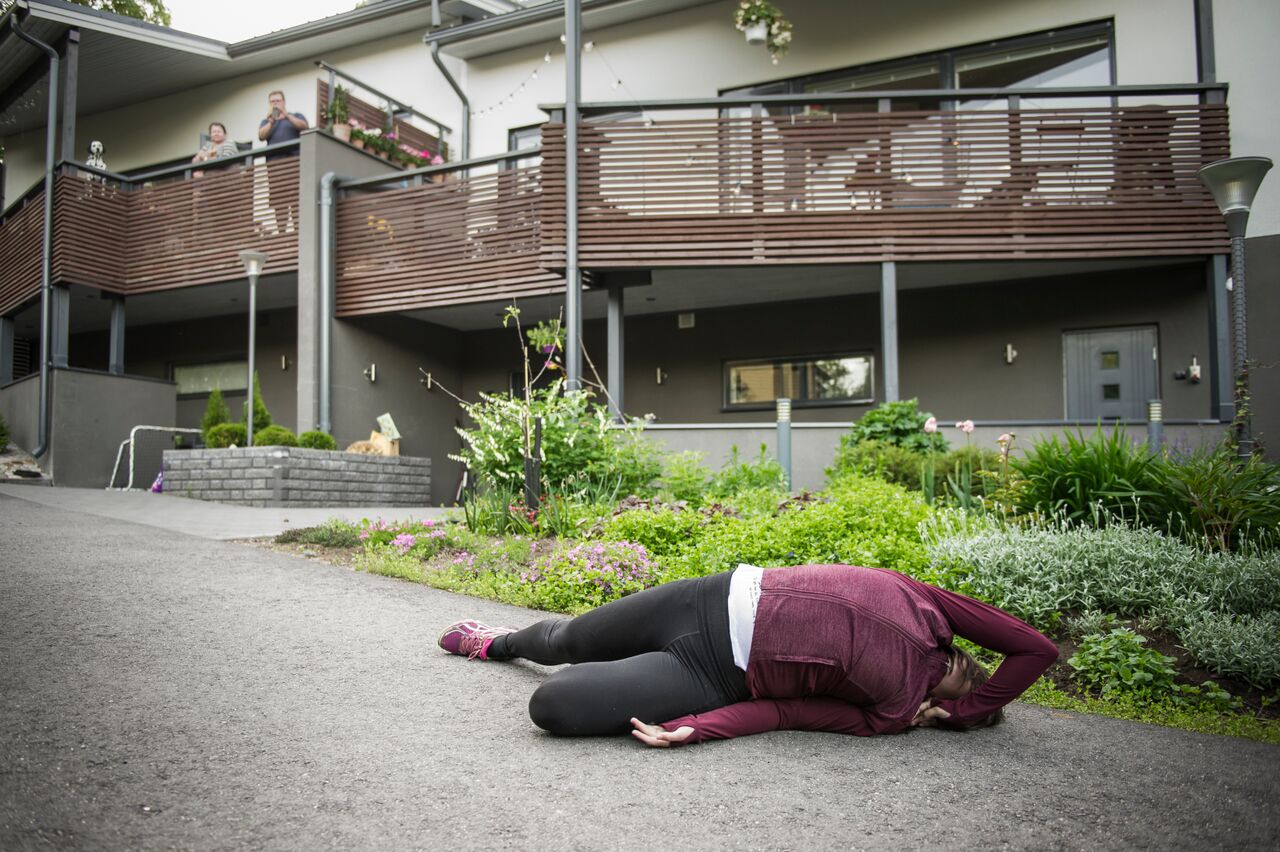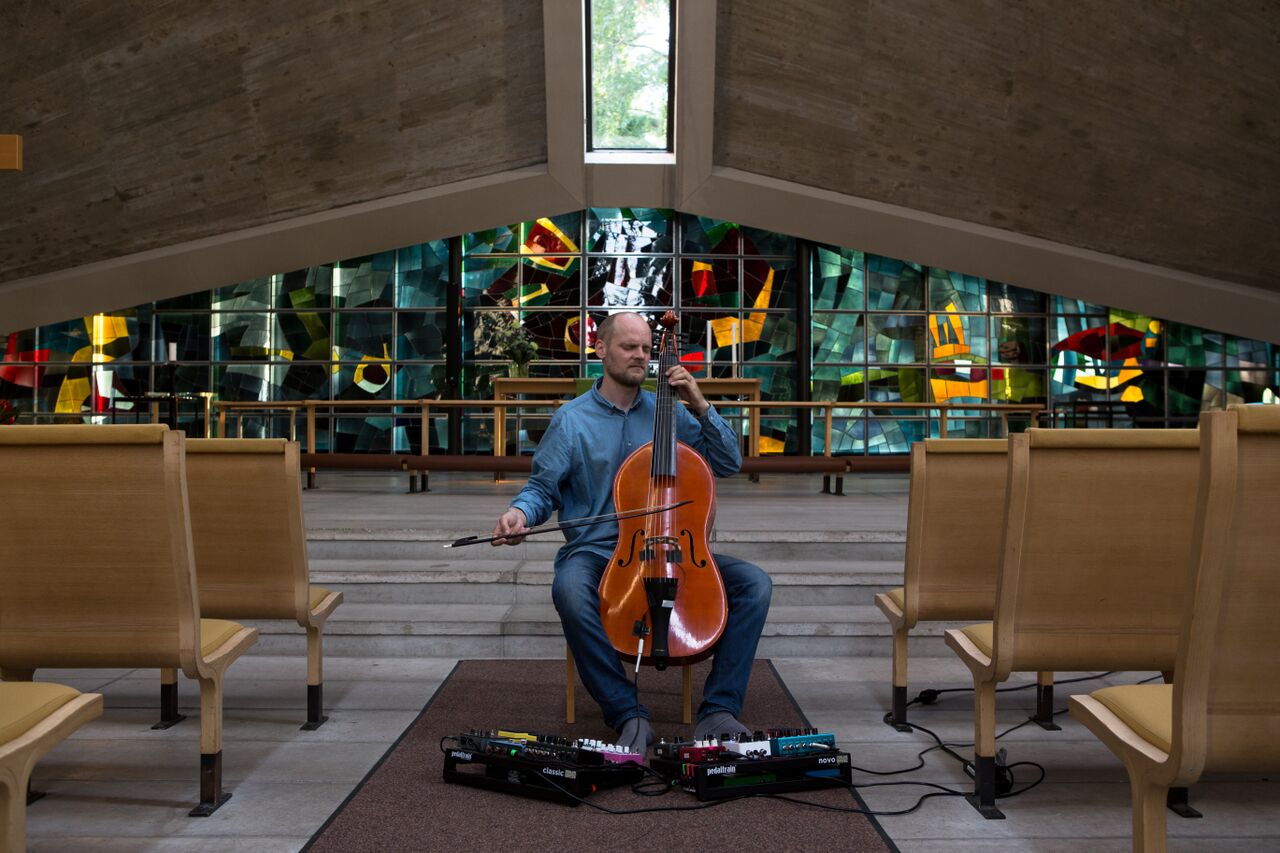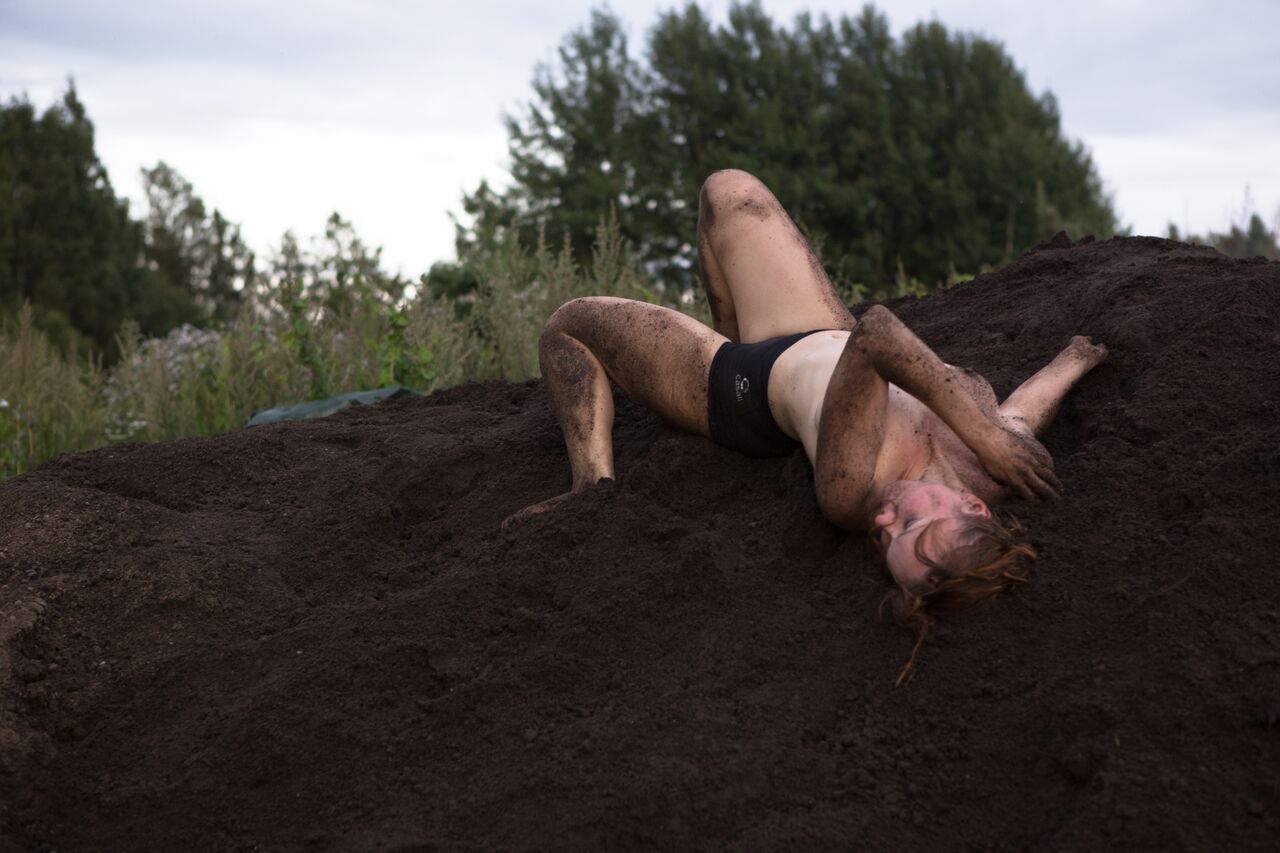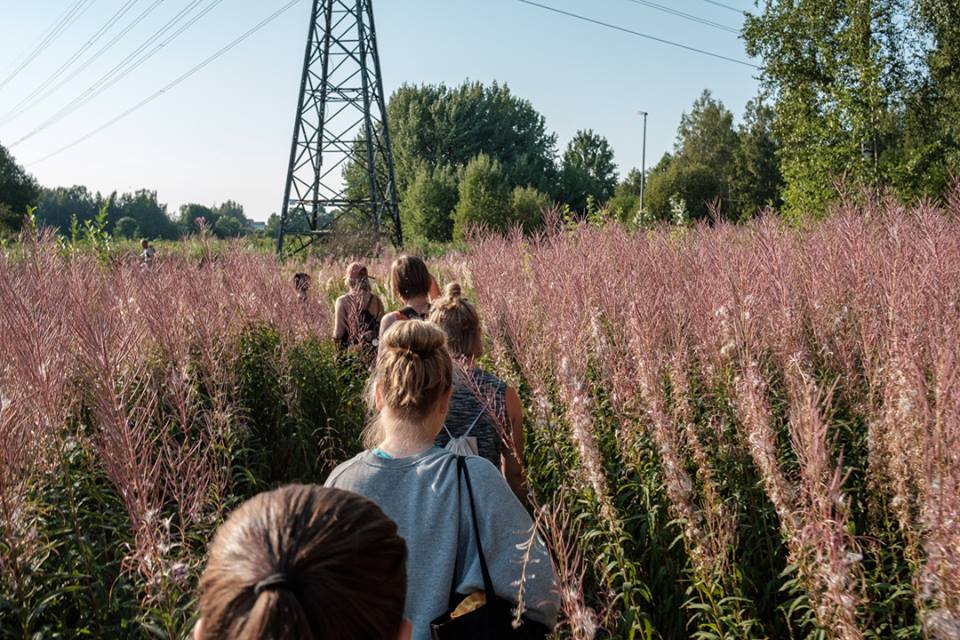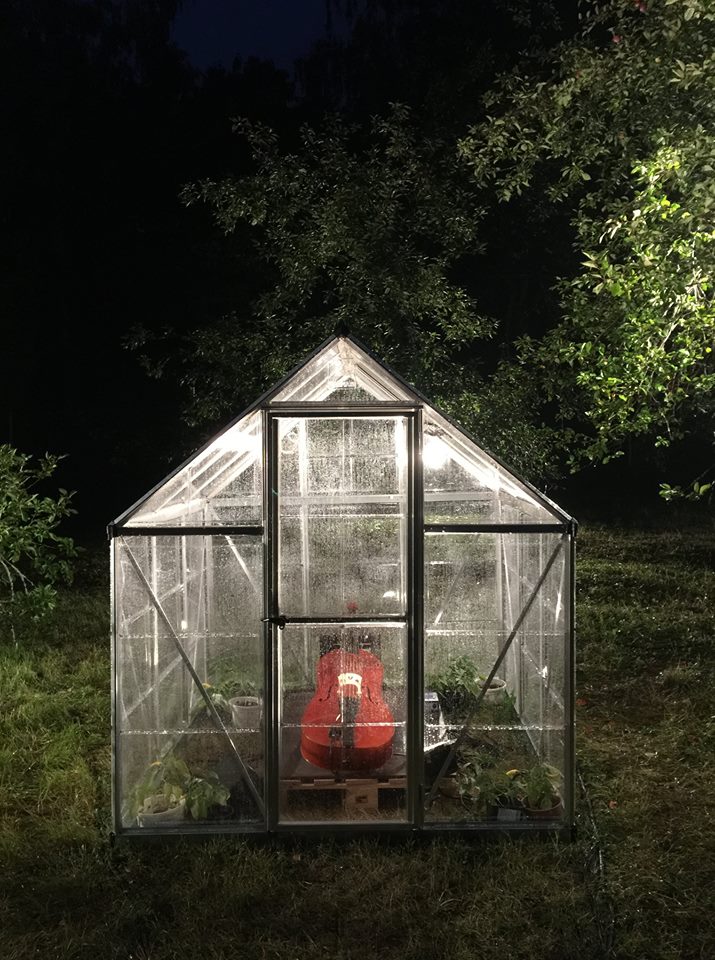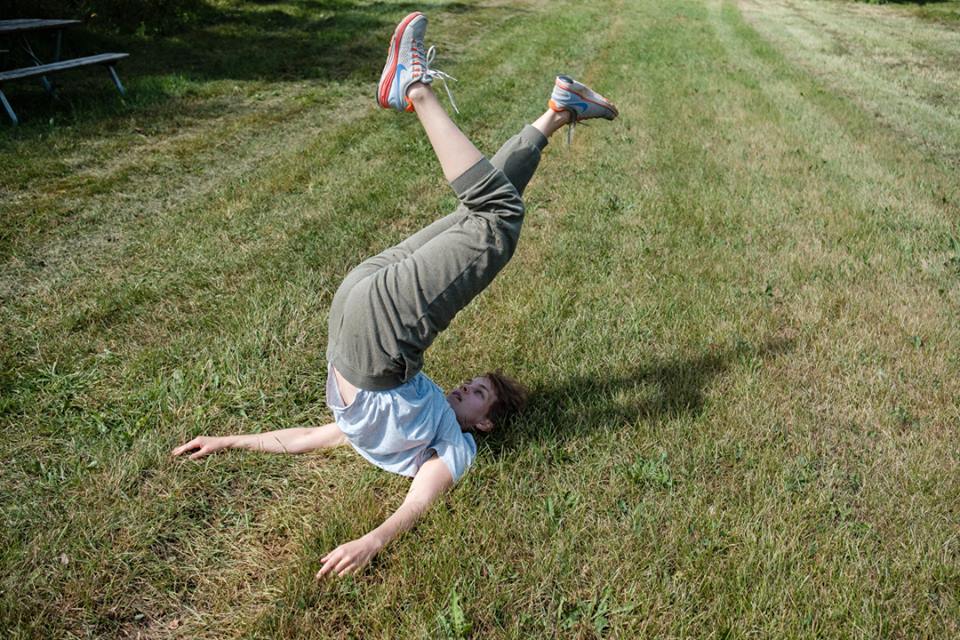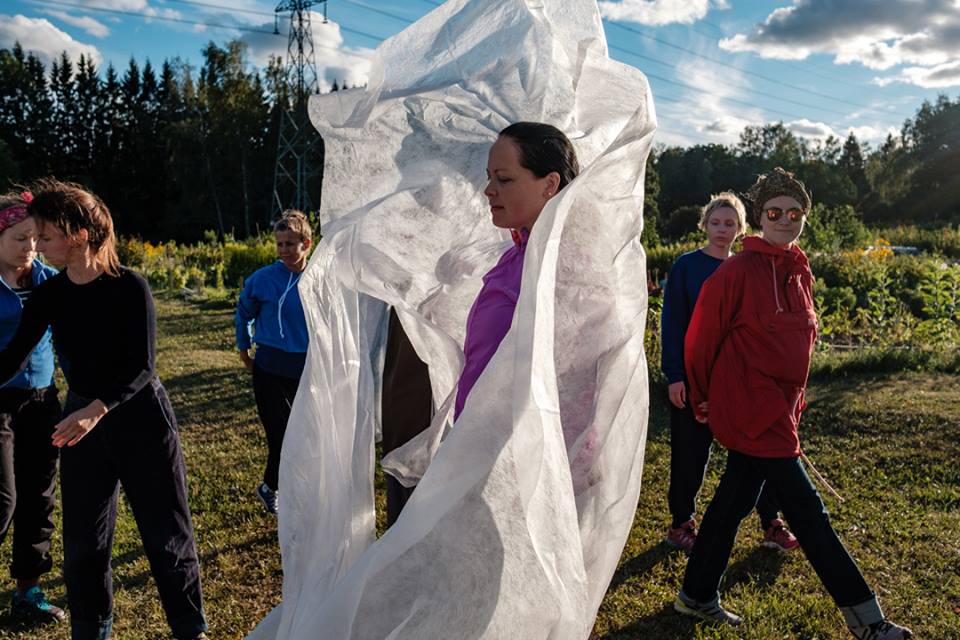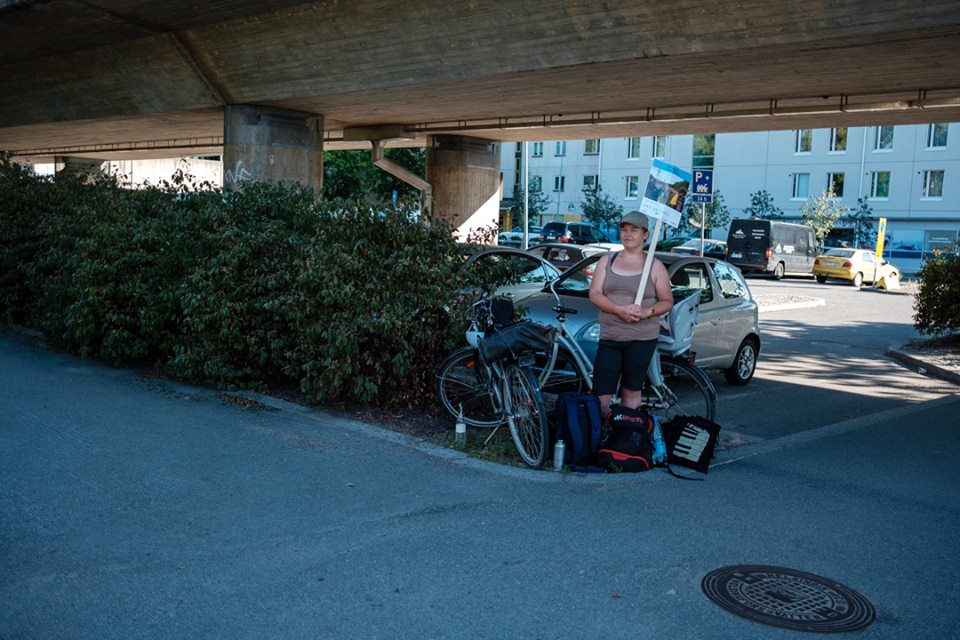Choreography, performance – Jenni-Elina von Bagh
Scenography – Ingvill Fossheim
Lighting design – Ina Niemelä
Sound design and composition – Tom Lönnqvist
Realization of the sound in collaboration with Johannes Vartola
Dramaturge – Otto Sandqvist
Corporeal assistant – Virpi Nieminen
Residencies – Kutomo, Ehkä-tuotanto, Teisko-radicalisation
Production – Zodiak, Jenni-Elina von Bagh
Premiere at the Zodiak Stage 25.2.2020
Duration 50min
Performance language English
Jenni-Elina von Bagh’s solo performance A Prologue explores the relationship of the multi-layered body and the about-to-happen, the unknown. It probes what it feels like to live in this time, how the present confusion and the state of the world are connected to art, dance, our bodies and our senses. What is the moment right before the moment?
A Prologue is a site of dynamic flows that seek release from the habitual patterns of the mind and from reactive behaviours. It surrenders to expressive dimensions, where also laughter is an attractive possibility. In its wider frame of reference it is inspired by philosophical thinking that argues that the power of life permeates life, death, human and non-human.
The performance explores borderlines and gaps, regarding the subject as something constantly changing and transforming, connected to both the present and the past. A Prologue is also a dialogue between two professional identities: that of the performer and that of the choreographer. (www.zodiak.fi)
Photos Katri Naukkarinen
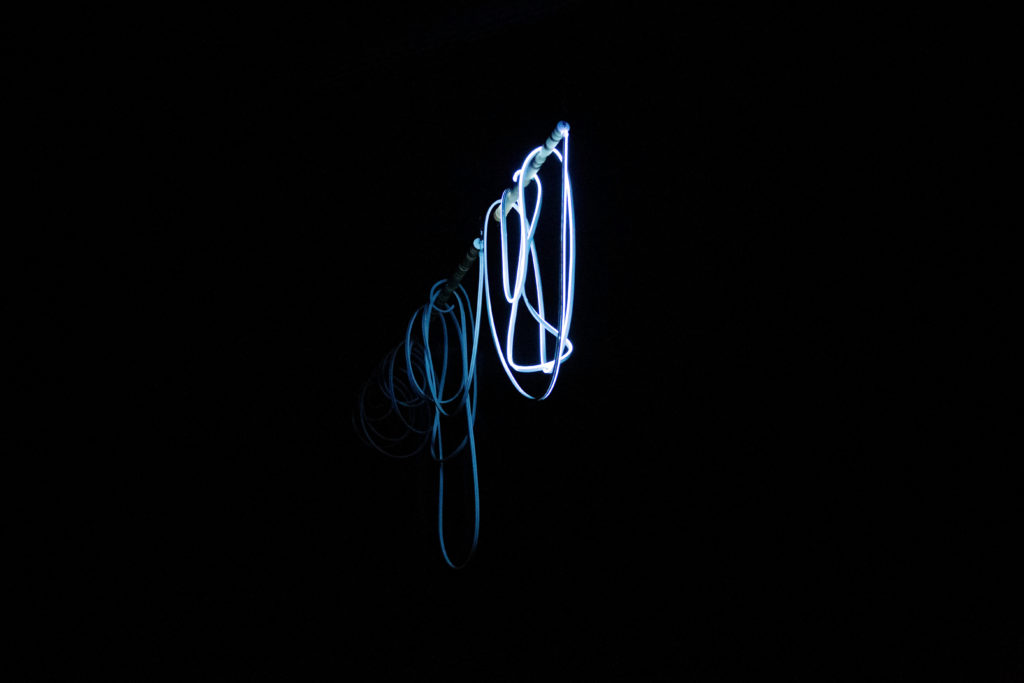
Turned pine tree and silicone coated LED lights
Teos tunnustelee sitä miltä tuntuu elää tässä ajassa ja samalla antautua elämänvoiman kysymykselle. Mitä elämän voima on? Miten sen lävistää ihmisen ulottuen tulemisen tapahtumalle, joka myös ylittää ihmisen.
Olemme työryhmänä käsitelleet erityisesti Henri Bergsonin filosofista käsitettä elan vital. Käsitteen uudellen käännös voisi olla meidän ajassamme näyttämöllisten komponenttien törmäys ja taitos kohti laajempaa posthumanistista maisemaa ja mahdollisuutta uusien reittien luomiselle.
Soolona teos tunnustelee yhden esiintyjän ruumiin, tietyn historian ja kokemusavaruuden omaavaa komponenttia. Se leikittelee eri tendensseillä ja rooleilla, jotka puristuvat ja avautuvat tästä ulottuvuudesta kohti näyttämötapahtumaa. – Jenni-Elina von Bagh
Borderlines and gaps. Life, death, human, non-human. Material explored stenographically include fossilized traces of ancient worms, repurposed human hair and medical implants, plastics and rubber, glass and sand and soil, salvaged wood and metal. The colored textiles, hair, string and wood are dyed with bio based colourants, involving processes of fermentation and microbial interference. –Ingvill Fossheim
“Kun yhteiskunta ajautuu kriisivaiheeseen tai lähestyy romahdusta, mahdollisuuksien horisontti avautuu. Sitä on kuitenkin vaikea erottaa, ja siihen rajautuvaa maastoa on vaikea kuvailla ja kartoittaa. Mahdollisuuksien horisonttia voidaan luonnehtia parhaiten lainaamalla Ignacio Blancon määritelmää tiedostamattomasta: “Tiedostamaton on tekemisissä rajattomien tapahtumasarjojen kanssa, joiden voima ei kumpua vain laskelmoitavuudesta vaan myös jatkumoista.” 11 Semiootisen sfäärin räjähdys ja semiootisen simulaation läpikotainen voimistuminen ovat yhtäältä laajentaneet mahdollisuuksien horisonttia ja toisaalta ajaneet yhteiskunnallisen hermojärjestelmän paniikkiin. Järki ei kykene paniikin vallitessa hallitsemaan tapahtumien virtauksia ja käsittelemään infosfääriin leviävää semiostimulaatiota. Skitsofrenia on läpäissyt yhteiskunnallisen mielen. Sen aiheuttama ahdinko on kuitenkin kaksiteräistä: se on kivuliaalla tavalla kaoottista, mutta samalla se on mahdollista ymmärtää myös värähtelyksi, joka ennakoi uuden älyllisen rytmin löytymistä.”
Mahdollinen tulevaisuus ja voimattomuuden aika, Franco “Bifo” Berardi (Tutkijaliitto 2019), s. 3111 Ignacio Matte Blanco, The Unconscious as Infite Sets: An Essay in Bi-logic (1975), s. 17
A Prologuen valo saa rytminsä mm. tästä Franco “Bifo” Berardin lainauksesta. Valosuunnittelu koostuu pääosin transrationaalisista käännöksistä: tekstistä, äänistä ja nauhoituksista valoksi. Käännökset on toteutettu yksinkertaisella dataprosessoinnilla ja signaalinmuunnoksilla hyödyntäen “graafisen” valosuunnittelun mahdollisuuksia. – Ina Niemelä
critiques in finnish and swedish“What is the atonal composition of time wa can’t see? Does electricity respond to it? ” – Tom Lönnqvist
